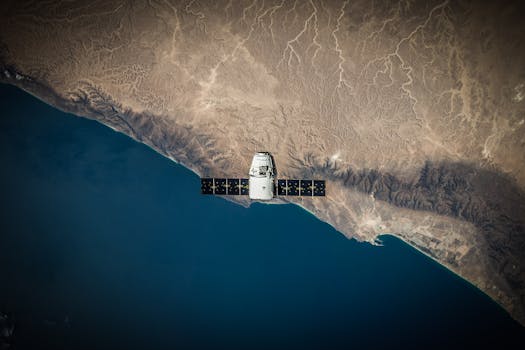
MEO Satellites: Revolutionizing Global Connectivity with Medium Earth Orbit Technology
MEO satellites, or medium earth orbit satellites, are a type of satellite that operates at an altitude of approximately 2,000 to 36,000 kilometers above the Earth’s surface. This orbit is higher than low earth orbit (LEO) satellites but lower than geostationary orbit (GEO) satellites. MEO satellites have gained significant attention in recent years due to their unique advantages and applications in various fields, including telecommunications, navigation, and Earth observation.
The focus keyword MEO satellites is a crucial aspect of this article, as it highlights the importance of medium earth orbit technology in modern satellite communications. MEO satellites offer several benefits, including global coverage, high bandwidth, and low latency, making them an attractive option for various industries and applications.
History and Development of MEO Satellites
The concept of MEO satellites dates back to the 1960s, when the United States and the Soviet Union began exploring the possibilities of using satellites in medium earth orbit for military and scientific purposes. However, it wasn’t until the 1990s that MEO satellites started to gain commercial attention. The first commercial MEO satellite system, known as the Iridium constellation, was launched in 1998 and provided global mobile satellite services.
Since then, several other MEO satellite systems have been launched, including the Globalstar and O3b (Other 3 Billion) constellations. These systems have demonstrated the potential of MEO satellites in providing high-quality, global connectivity and have paved the way for future developments in the field.
Benefits and Applications of MEO Satellites
MEO satellites offer several benefits that make them an attractive option for various applications. Some of the key advantages of MEO satellites include:
Global coverage: MEO satellites can provide coverage of the entire Earth’s surface, making them ideal for applications that require global connectivity.
High bandwidth: MEO satellites can offer high-bandwidth services, making them suitable for applications that require large amounts of data transfer, such as video streaming and online gaming.
Low latency: MEO satellites have lower latency compared to GEO satellites, making them suitable for real-time applications such as voice and video communications.
MEO satellites have various applications in fields such as telecommunications, navigation, and Earth observation. They are used for providing mobile satellite services, broadband internet access, and high-definition video broadcasting.
Challenges and Future Developments
Despite the benefits and applications of MEO satellites, there are several challenges that need to be addressed. Some of the key challenges include:
Interference: MEO satellites can experience interference from other satellites and terrestrial systems, which can affect their performance and reliability.
Orbit congestion: The increasing number of satellites in medium earth orbit can lead to orbit congestion, making it challenging to manage and maintain the satellites.
Regulatory frameworks: The regulatory frameworks for MEO satellites are still evolving and need to be clarified to ensure the long-term sustainability of these systems.
Researchers and developers are working to address these challenges and improve the performance and efficiency of MEO satellites. Some of the future developments in the field include the use of advanced technologies such as phased arrays and digital payloads, which can enhance the capacity and flexibility of MEO satellites.
Conclusion
In conclusion, MEO satellites are revolutionizing the way we communicate and access data globally. With their unique advantages and applications, MEO satellites are poised to play a crucial role in the future of satellite communications. As the technology continues to evolve, we can expect to see even more innovative applications and developments in the field of MEO satellites.



